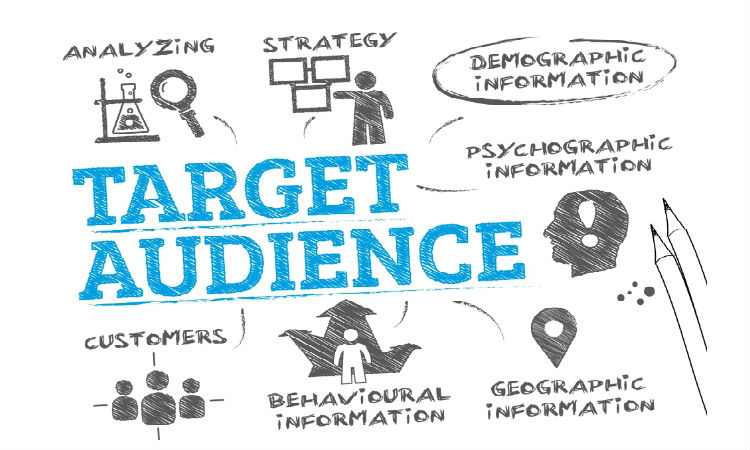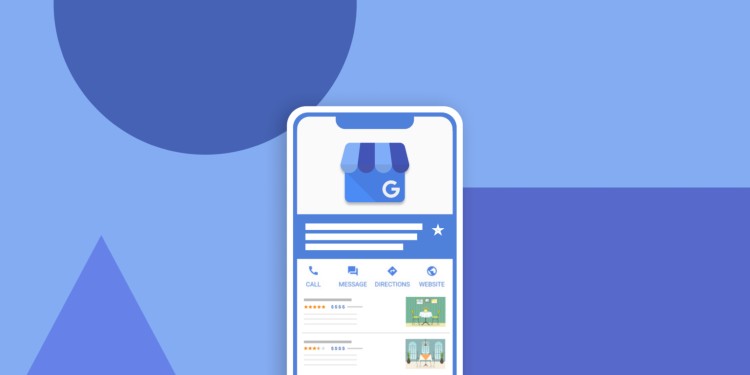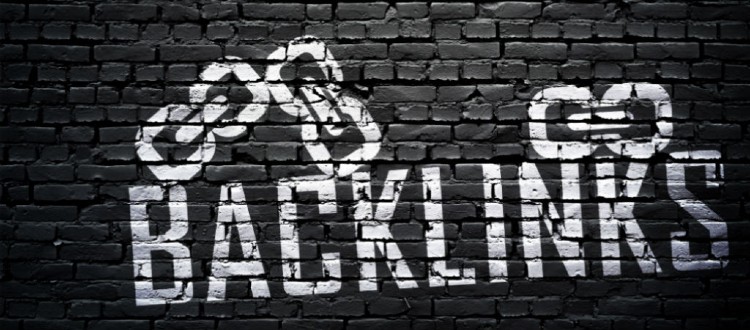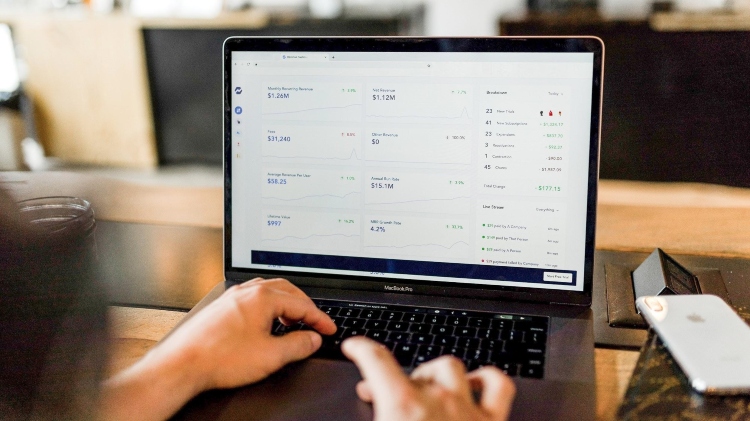SEO is one of the most modern marketing disciplines of today, especially in a world that is increasingly dominated by digital technologies. Search engine algorithms constantly change, so keeping up with them is essential if you want to attract more people to your website.
The purpose of SEO is to increase the organic traffic to a website by improving its visibility in search engine results (SERPs). Using SEO will help you achieve top search engine rankings for your target keywords.

However, due to the search engine developments and the changing consumer behaviors, SEO methods are constantly growing, and keeping up with the most successful optimization techniques is not an easy feat.
Furthermore, you should be aware that even the simplest mistakes in SEO could potentially result in costly consequences to your digital marketing strategy. They could even make the entire strategy surrounding your content completely useless.
Here are the 12 most common SEO mistakes you should avoid.
1. Not Setting Clear SEO Goals
According to recent research, only 36% of small businesses had a clear SEO strategy in 2020.
Nevertheless, in order for your website to be successful, you must clearly define your SEO goals. Is it your goal to increase conversions? Do you want to rank higher on Google’s front page? Is your aim to boost your sales?
Your company will have a very difficult time reaching any of these goals if it doesn’t come up with a plan to achieve them.
Tips and Solutions:
- Understand your competitors — their ranking, keywords, content, and performance.
- Plan your actions and identify your key stakeholders and goals.
- Utilize technologies, such as tools and platforms that will assist you with your workflow and strategy.
2. Not Knowing Your Audience

Search engine optimization is about listening to your customers. To be effective at it, you must understand who your target audience is to the tiniest detail possible.
Many marketers believe they understand their target audience but fail to grasp how their potential customers act on a granular level. At the same time, consumers expect instant answers and results to their queries in real-time.
Even though historical data can certainly help by providing great insight into seasonal trends, marketers must take a more holistic approach if they want to understand their customers.
For instance, one of the most important steps is finding out what words your potential customers will use to describe your products and services. While doing this, make sure not to overlook long-tail keywords, which are the ones preferred by search engines and users alike.
Tips and Solutions:
- Try to understand the market in which your consumers make their purchases — what are the macro trends?
- Utilize both historical and real-time data to understand how behavior is changing.
- Add what you’ve found out about consumer intent to your keyword selections and strategy.
- Use Google keyword planning tools and vendor tools at your disposal.
3. Ignoring Your Google My Business Listing

Since Google tends to suggest those businesses that are in the vicinity of potential customers, don’t forget to provide all the information necessary to manage your Google My Business listing.
We also advise you to create high-quality SEO content that is locally relevant and optimized for your location since local visibility has become critical for many businesses due to the growing mobile consumer base.
Tips and Solutions:
- Enter your listing’s complete data.
- Include keywords.
- Stay up-to-date on your business’ operating hours.
- Add photos.
- Handle customer reviews and respond to them.
- Allow customers to message you.
- Use local posts.
4. Overlooking mobile traffic

Content and keywords are not the only aspects of SEO. The quality of your website is also crucial, especially when it comes to mobile devices, as more than 50% of all web traffic worldwide comes from mobile searches.
Over the past decade, Google has placed an increasing emphasis on mobile-friendly websites. Nevertheless, many companies still use an outdated design that has not been optimized for mobile devices.
Therefore, if you want to increase organic traffic to your website, you should consider making mobile searches a part of your SEO plan. Unless you do this, you may end up losing money.
Tips and Solutions:
- Improving the loading time is essential, as it may help you keep the people on your site longer.
- Your mobile site should have a responsive design so that users can easily find and navigate it.
- Come up with strategies that include both the local market and mobile users.
- Provide users with mobile content that is aimed at making their experience even more enjoyable.
5. Not Having Unique Title Tags and Meta Descriptions
The process of optimizing content does not end with the addition of target words. Namely, it is also essential not to forget about title tags and meta descriptions when building your SEO strategy. Search engines consider all these factors when crawling your website — therefore, if you use all of them properly, you can improve your content’s performance considerably.
Meta descriptions, which consist of 160 characters, are crucial since they sell your page to potential clients. Therefore, try to be as original and persuasive as possible. Make sure that your homepage and all the other pages include a custom meta description that will entice people to click on your listing in search results.
Tips and Solutions:
- For each page, write a descriptive title that is brief but not vague.
- Your keywords should match your intent, and they must be put in the right place.
- You should make unique title tags of optimal length on all pages.
- We advise you to follow Google’s best practices for title and snippet creation.
6. Not Adding Fresh, High-Quality Content

In the past, duplicating text was common, but today, search engines tend to penalize this practice. Content that has been copied and plagiarized is considered spammy. As a result, it is strongly discouraged.
Therefore, as opposed to simply recycling articles from other websites or reshaping them using software, you should invest in creating original, insightful content. Make sure to share your own ideas and explain them well. Furthermore, when accepting guest posts, don’t forget to run them past an online plagiarism checker to ensure they are original.
In addition, the articles you offer should not be of low quality, as Google’s algorithm aims to provide only the best results.
These are some of the errors companies tend to make when it comes to content:
- Creating useless content containing too many keywords rather than valuable information
- Trying to optimize for too many keywords in a single article
- Building content that is inaccurate or untrustworthy
- Posting infrequently or following an inconsistent posting schedule
Tips and Solutions:
- Ensure your content strategy and SEO strategy are in sync.
- Instead of using SEO content machines, hire professionals who can produce high-quality copywriting.
- Use strong headlines that match your content’s topic.
- Be careful not to mislead your readers.
- Provide answers in your content and ensure it contains relevant information.
- Engage people by telling a story they can relate to.
- Provide references from reputable sources.
- Make the reading experience more engaging by adding videos and images.
7. Buying Backlinks

Backlinks rank highly in search engine optimization. If you use bought links to boost your website’s rankings, you may receive a penalty from Google. In this situation, you would not only be wasting your money — you’d also be potentially destroying your website’s search engine ranking.
The majority of link-selling sites do not actually improve your ranking with Google. As a matter of fact, most link-builders and link-sellers have the same list of sites from which they sell links. Luckily, Google seems to be aware of these lists, which makes the sites that rely on such practices more susceptible to devaluation.
Just because you haven’t been penalized by Google for using shady links or practices, it doesn’t mean you are completely safe. For instance, even if you built links to your website years ago, you could still get penalized today. Therefore, if you decide to pay money for links, you should hire a company that can acquire high-quality links within your niche without violating Google’s policies.
8. Ignoring Analytics

The only way to find out the effectiveness of your SEO and content marketing efforts is to track and analyze the results. Making decisions without consulting the numbers is similar to not having a strategy at all.
If you want to determine whether your content and SEO efforts are working, you need to track their progress. People tend to underestimate the time required for SEO and assume it is a one-and-done type of process, but constant tweaking and continued optimization are necessary if you want your rankings to be high. For effective optimization, you need to review and update your analytics regularly.
Many Google tools are available to help you understand your website’s performance better, including Google Analytics and Google Search Console. Thanks to them, you will be able to see how various forms of content are performing. By comparing and adjusting your digital marketing and content marketing strategies, you can constantly make improvements.
Tools like SEMrush and Google Keyword Tool can help you with keyword optimization. By using them, you will understand which online search queries your target audience is making. This kind of data will allow you to create a variety of content that will help you reach more clients.
Tips and Solutions:
- The best tool for you and your organization will be the one whose features meet all of your needs.
- In some cases, SEO tools can provide value to your business — they can assist you with certain tasks while being relatively low cost.
- Platforms and tools can help you implement marketing strategies and increase efficiency.
- With these tools, you’ll get to conduct in-depth keyword research.
- The best way to grow your SEO campaigns is to manage and execute them.
- In order to achieve effective management, it’s important for managers to work closely with the reporting and measurement teams.
- The most important element of the marketing strategy is a thorough analysis of the competition.
- It is important to understand that SEO automation can also make your campaigns more efficient and help you speed up tasks that you used to spend hours on manually.
9. Long Messy URLs
The URL, or uniform resource locator, is a web address that identifies the location of a particular website on the internet. To prevent Google from truncating them, your URLs should ideally be shorter than 2083 characters — or 512 pixels. This way, the search visibility of your link will be improved, which may lead the users to click on it.
Below, you will find a few factors that could make your URLs difficult to read, which may, in turn, discourage your audience from choosing your website:
- Using too many connectors or stoppers
- Including special characters like <space>, %, or #
- Using HTTP instead of HTTPS
- Including more than two folders in your URLs
Tips and Solutions:
- Your social media links will be more clickable if they have readable URLs.
- Shorter URLs rank better, and they tend to drive more direct traffic.
- A secure version of HTTP is HTTPS (HyperText Transfer Protocol Secure). An encrypted website ensures greater security since it protects information.
- You should try to include relevant keywords in your URLs.
- The characters in your URL should be lowercase.
10. Outdated Content and Information on Site

Outdated content can impact the authority of your website negatively. Namely, when a particular query is searched, the SERP offers many results. However, not all of them provide the information that is relevant to the reader. That is why whenever the search engine finds your content outdated or irrelevant, it will remove your site from the results page, since it would be a waste of crawl allowance to crawl and index those pages that are no longer relevant.
Increasing the bounce rate for such pages could even decrease the amount of traffic leading to your website, which is why you need to make sure your content is up to date.
11. Poor Use of External and Internal Links
When it comes to SEO, it is the quality of the links, rather than their number, that matters the most. For this reason, you should avoid adding external links from any site just for the sake of adding them. In fact, when creating external links, you need to make sure they lead to the websites with a high domain authority (DA).
In addition to this, it is always beneficial to have links from those sites that have already been linked to you, as this is likely to bring in significant traffic as well.
As for your own internal links, make sure to take note of the published content that is similar and relevant. This type of content will provide additional clarity, which will be another benefit. Naturally, you should avoid adding those internal links that are irrelevant to the subject of the posts.
Furthermore, using too many links within a single article can cause your site to have a lower ranking. Therefore, it is always best to focus on their quality rather than on the sheer quantity.
Tips and Solutions:
- Group together those web pages that share common topics.
- Analyze internal links to make sure there are no broken links or slow pages.
- Maintain a balance between internal and external links.
- Make sure no irrelevant pages are linked to your website.
12. Faulty Redirects and Broken Links
If you have no or little value from your redirects, your SEO ranking and traffic may drop. Some of your 301 redirects, which tend to accumulate over time, may no longer have the same SEO value. This will ultimately result in a higher bounce rate and longer loading time.
Users can be left with a negative impression if they encounter 404 errors on their way to your website. Plus, Google bots may crawl your pages fewer times because of these broken links.
That is why you should make sure to fix or redirect all the broken links, as they could lead search bots to other websites, preventing your important content from being indexed and crawled.
Of course, the domain authority of your page will also be negatively impacted by these issues.
Tips and Solutions:
- If your site uses HTTP, redirect it to HTTPS.
- Make sure your website is free of broken redirects.
- Ensure that all redirect chains and loops are fixed.
- Pages with 404 errors should be redirected.
- Content on the page should be replaced or recreated.
- You can redirect your audience to a similar piece of content on your website by using 301 redirects.
- If an external link is broken, reach out to the website for assistance. Alternatively, you can change the source if the domain is no longer functional.
Conclusion
Today, SEO plays a crucial role in all content marketing strategies. Keep your focus on providing high-quality content and increasing user engagement when implementing SEO. It’s also possible that some of these mistakes are human errors. However, to ensure your site is healthy, make sure you carry out an annual site audit. As you can see, these 12 mistakes occur fairly frequently, so now you know how to anticipate them.


